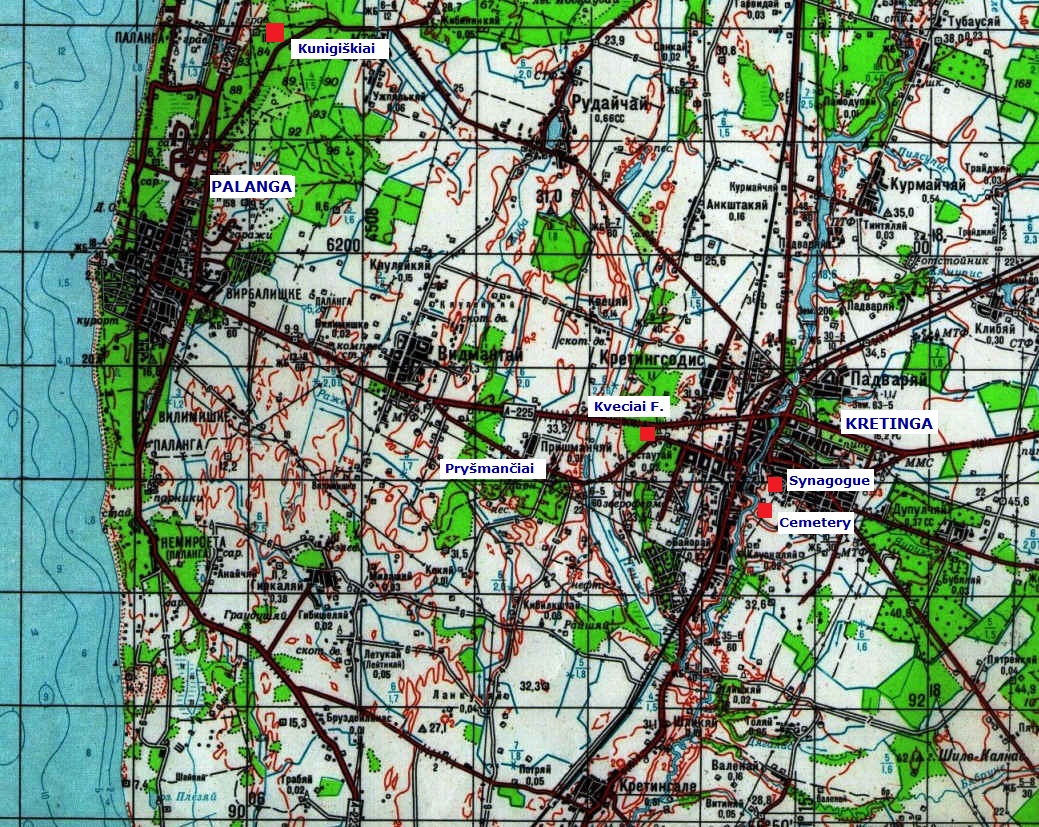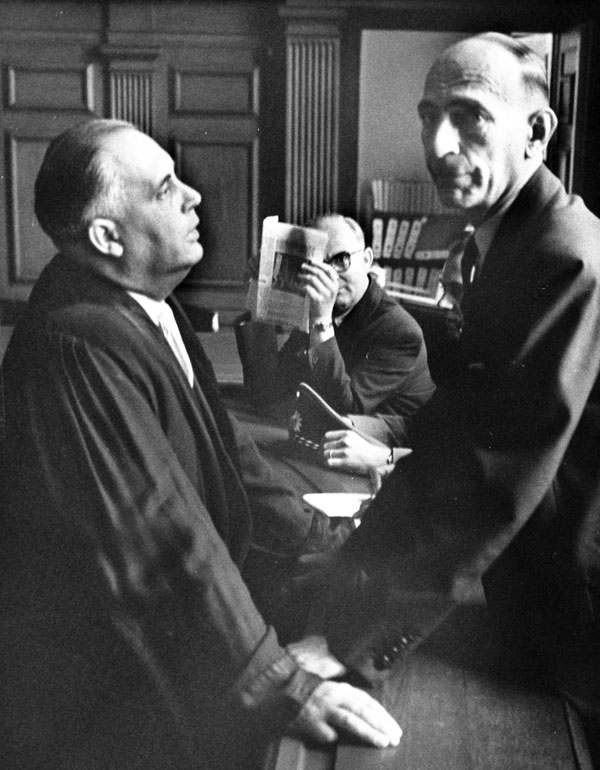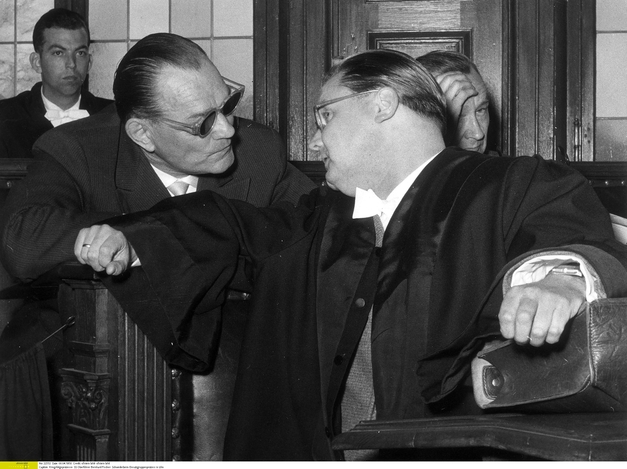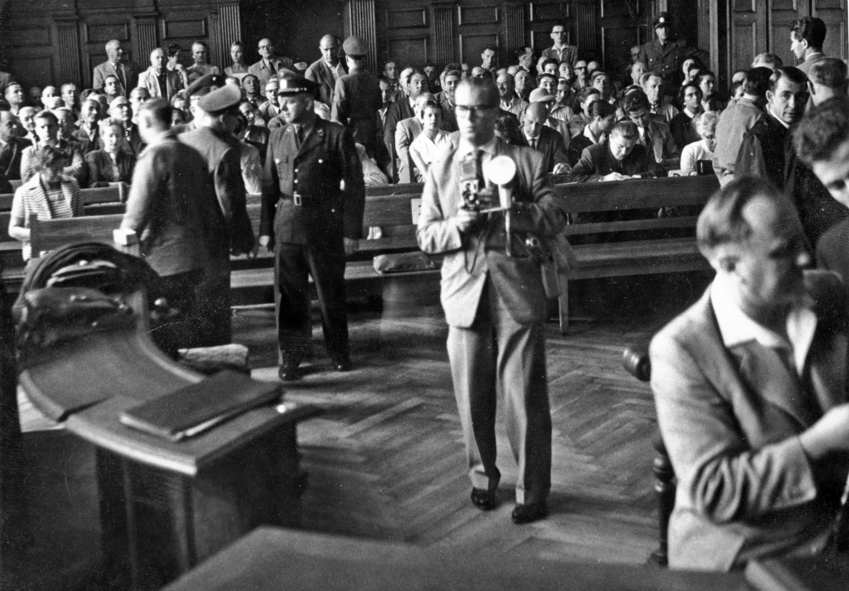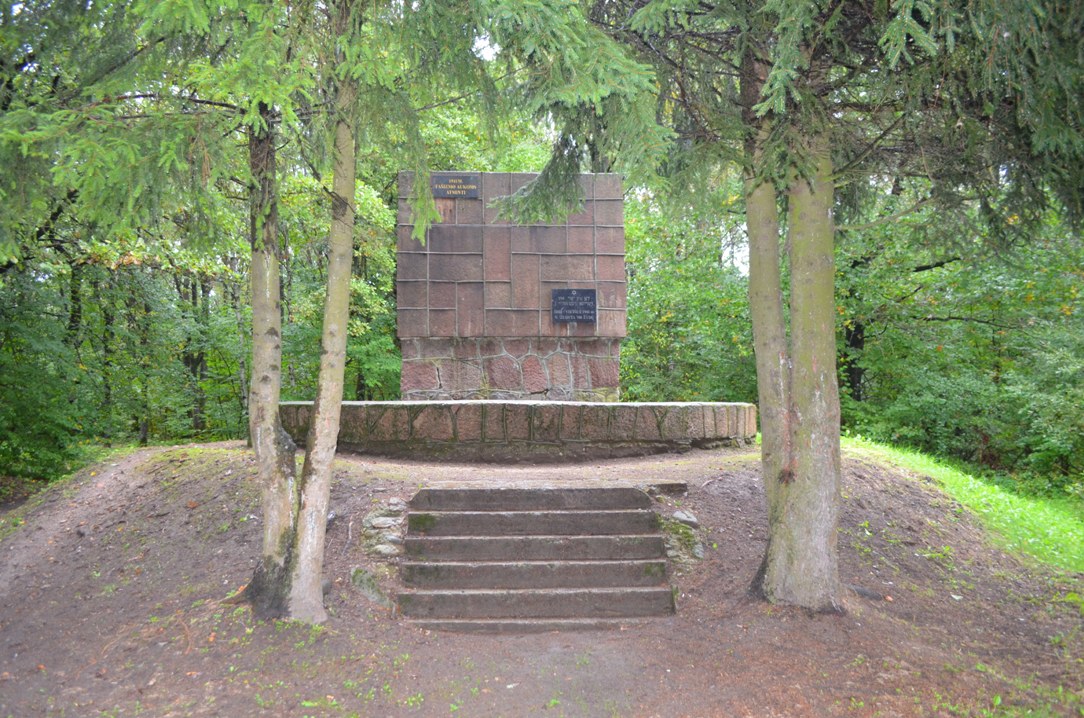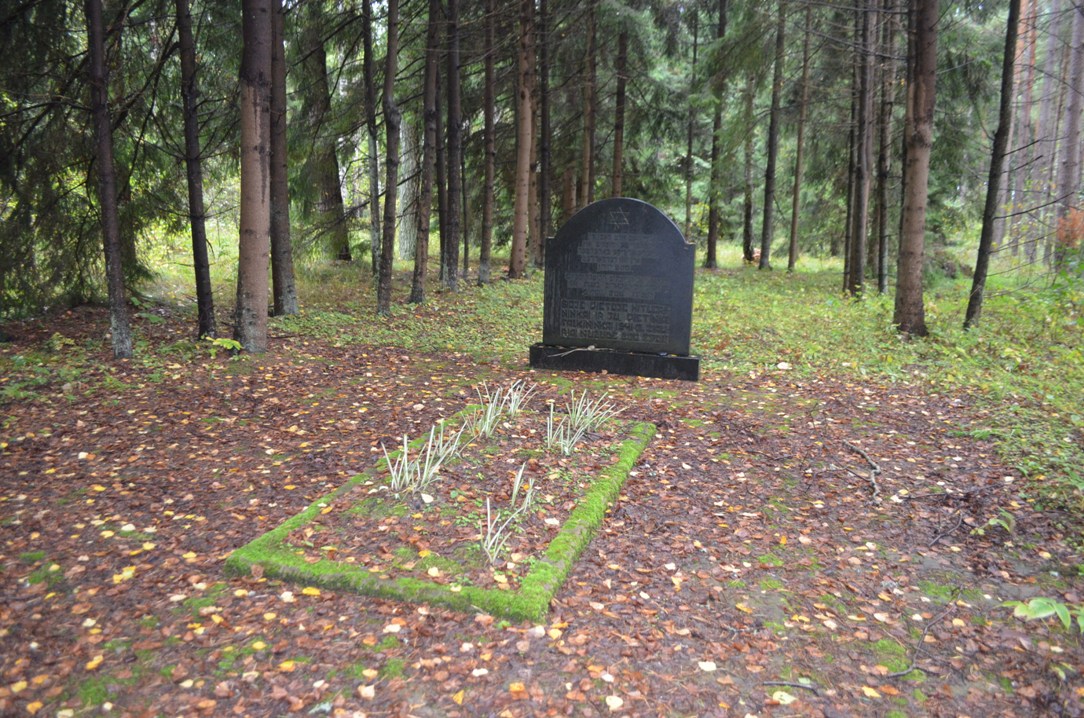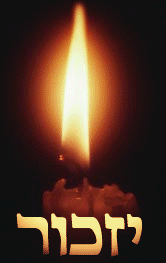Kretinga קרטינגה
The Shtetl of the Gillis Family
Kretinge, Kretynga, Crottingen, Krottingen, Krettingen,
Кретинген, Кретинга, קרעטינגע, קרעטינגען
War Crimes - The Investigation of the Holocaust in Kretinga
The massacre of the Jews of Kretinga and the annihilation of its centuries old Jewish community, just as happened in hundreds of other communities in Lithuania and thousands of others across Europe, was not an act conducted by anonymous murderers. Participating in the process of slaughter were German officials, organisations and soldiers, in cahoots with Lithuanian nationalists, civil organisations and police. As noted on the page detailing the events of the Holocaust in Kretinga, the murder of the Jews of Kretinga, and the adjacent towns of Gargždai and Palanga, were important in the development of the Holocaust, as these were the first organised Nazi massacres of entire communities in eastern Europe.This page will describe the organisation of the massacre, detailing the perpetrators and the investigation of the crimes by the Soviets and the Germans after the war.
The Perpetrators The annihilation of the Jewish community of Kretinga had been a collaborative initiative of the German occupation authorities, specifically the Wehrmacht commander, the Nazi civil administration, Tilsit Einsatzkommando, the Tilsit Gestapo, the Tilsit SD, the Polizeidirektion Memel, Polizei Schupo Memel, together with Lithuanian municipal, public, security and auxiliary police authorities with members of the ultra-nationalist Lietuvos Aktyvistų Frontas (Lithuanian Activist Front). Members of the Tilsit Einsatzkommando and officers of the security and criminal police of Kretinga District are responsible for the murder of the Jewish community of Kretinga, the other institutions played a crucial supporting role.
Einsatzkommando Tilsit
The Einsatzkommando Tilsit, was led by SS-Hauptsturmführer Hans - Joachim Böhme. Unlike the organised structure of the other Einsatzgruppen units which were staffed by convinced and deeply anti-Semitic Nazis, the Einsatzkommando Tilsit was created the day of the invasion as an ad-hoc execution squad with of randomly recruited ordinary police officers, civil servants, security forces, and border guards. Few were convinced Nazis and some were not Nazis at all. Yet, within a day they went from policemen to Holocaust perpetrators. Böhme tasked Dr. Erich Frohwann of the Tilsit Gestapo of Eastern Prussia (now Sovetsk in Russia) and Edwin Sakuth of the Memel Grenzpolizei (Border Police) with 'dealing' with communists and Jews in an area 25 kilometers from the Lithuanian border with Eastern Prussia.
Einsatzkommando Tilsit consisted of:
- Gestapo Tilsit commanded by SS-Hauptsturmführer Hans-Joachim Böhme.
- Grenzpolizei-Kommisariat (GPK) (Border Police) at Memel, Tilsit, Eydtkau and Sudauen (Suwałki) and their sub-ordinate Grenzpolizei-Posten (border posts) (GPP).
SD Tilsit, commanded by SS-Sturmführer Werner Hersmann. - Memel Schutzpolizei (Schupo) commanded by the Police Chief for Memel, SA-Oberführer Bernhard Fischer-Schweder. Fischer- Schweder was a Nazi member 1920s and a friend of Stahlecker. He provided 20 Schupo policemen to guard and participate in the shootings under the command Werner Schmidt-Hammer.
The Gestapo Tilsit and the SD Tilsit participated in most of the executions; the involvement of the different Grenzpolizei’s and the Schupo Memel depended on location.
SS-Brigardeführer Franz Walter Stahlecker, commander of Einsatzgruppe A, told Böhme on June 22 1941, that the measures to be taken in the course of operation Barbarossa would include “the special treatment of all as communist suspected Lithuanians and Jews, including women and children” in a 25 km strip east of the Reich’s border. At a meeting in Kretinga of the Lithuanian administrative authorities, headed by Pranas Lukys alias Jakys, the Head of the Lithuanian security police in Kretinga, at the beginning of August 1941, SS-Oberscharführer Franz Behrendt ordered the shooting of all women and children, as so far mainly Jewish men were murdered in the 25 km. strip assigned to the Einsatzkommando Tilsit. After the meeting the mass executions of Jewish women and children, mainly carried out by Lithuanian collaborators, commenced. The executions were reported to Jakys and the Gestapo Tilsit.
The Einsatzkommando Tilsit is responsible for the mass executions in following Towns: Gargždiai, Kretinga, Palanga, Vilkaviškis, Kudirkos Naumiestis, Tauragė, Jurbarkas, Virbalis, Kybartai, Šilutė, Šiaudvyčiai, Pagėgiai, Virbalis, Veiviržėnai, Kalvarija, Kulėšai, Batakiai, Marijampolė, Pilviškiai, Skaudvilė, Vainutas, Eržvilkas, Šilalė. Over all about 5,500-6,000 people were murdered by the Einsatzkommando Tilsit.
Saugumo policija - Lithuanian Security Police
The Lithuanian Security Police (LSP) was a local police force that operated in Nazi-occupied Lithuania from 1941 to 1944, collaborating with the Nazi enfrorcement forces, the SiPo and SD and subordinate to the German Kripo (criminal police). When Nazi Germany invaded Soviet Union on 22nd June 1941, nationalist Lithuanians established the Provisional Government of Lithuania, later dissolved by the Germans on 5th August 1941. The State Security Department was headed by Vytautas Reivytis, with control over the LSP. The initial task of LSP was identifying and arresting communists. During the first months of German occupation, the LSP was responsible for spying on, arresting and interrogating communists, members of Komsomol, former Soviet government workers, NKVD collaborators, Jews and supporters of Jews.
The LSP commander in Kretinga and in the area controlled until October 1941 by the Einsatzkommando Tilsit was Pranas Lukys alias Jakys, the former chief of the Lithuanian state security police. After the Soviet occupation of Lithuania in 1940 he fled to Germany, returning with the Nazis to head the LSP in the area.
Lietuvos Aktyvistų Frontas - Lithuanian Activist Front
Lietuvos Aktyvistų Frontas (LAF) was a short-lived resistance organization established in 1940 by Kazys Škirpa, the former Lithuanian military attaché to Germany, after Lithuania was occupied by the Soviet Union. The goal of the organisation was to liberate Lithuania and re-establish its independence, succeeding in establishing a short-lived provisional government in Lithuania after the Nazi invasion.
The LAF was fervently anti-Semitic and anti-Polish. Many of its members collaborated with Nazi Germany and participated in the persecution of Lithuania’s Jews.
In an article published by the Genocide and Resistance Research Centre of Lithuania, it is stated that no less than 86 Lithuanian residents of Kretinga contributed directly and indirectly in the murder of their Jewish neighbours, specifically 4 municipal officials, 6 security and criminal police, 26 police officers and around 50 members of the auxiliary police. While some had taken part in the slaughter, many more were involved in guarding Jews before their execution and in the theft and distribution of their property immediately after the killings.
Ulmer Einsatzgruppen-Prozess - The Trial of Einsatskommando Tilsit in Ulm in 1958
From July 28th to August 29th 1958, 10 men from the Tilsit Einsatzkomanndo went on trial in Ulm in Germany. The Ulm trial, would be one of the largest in a West German court that centered on the mass murder of Jews, accused the men, of killing 5,106 Jewish men, women and children in the border region of Lithuania with East Prussia and especially in Gardsen (Gargždai), Krottingen (Kretinga) and Polangen (Palanga).
The pretext for the Ulm trial had not been an initiative on the part of German authorities to prosecute Nazi crimes, but rather a coincidence. One of the defendants, Bernhard Fischer-Schweder, the police chief in Memel, Lithuania, in 1941 and involved in the murder of thousands of Jews, assumed a false name after 1945 and was appointed director of a refugee shelter near Ulm in 1955. He was fired when his past came to light. Fischer-Schweder filed a lawsuit in a labour court and was identified by a survivor from Lithuania who came across a newspaper article about the case.
In an atmosphere where German post-war society was not interested in conducting trials against Nazi criminals in their midst, it would be the state prosecutor of Baden-Württemberg, Erwin Schüle, who personally fought for the trial to take place.
The Tilsit Einsatzkommando Defendants at the Ulm Trial
1 - SS-Hauptsturmführer Hans Joachim Böhme - chief of Tilsit Staatspolizei; accused of organising and commanding the Tilsit Einsatzkomanndo from June to October 1941; murder of 5, 108 civilians. Sentence: 15 years.
2 - Werner Hersmann – Tilsit SD commander; accused of organising,with Böhme, the Tilsit Einsatzkomanndo and being its security chief; later reassigned to Einsatzgruppen D; murder of 5,108 civilians. Sentence: 15 years.
3 - Bernhard Fischer-Schweder - chief of the Schutzpolizei in Memel. Accused of volunteering an officer, Werner Schmidt-Hammer, and twenty men for the Einsatzkommando; volunteering to carry out shootings in four sites; murder of 711 civilians. Sentence: Ten years.
4 - Pranas Lukys, alias Jakys – Commander of the Lithuanian Security Police. Accused of accessory to murder of 315 civilians, Sentence: Seven years.
5 - Franz Behrendt - Memel frontier police official. Accused of securing the area during shootings; coordinating officer of orders with collaborators, such as Pranas Lukys, accessory to murder of 1,126 civilians. Sentence: Five years.
6 - Werner Kreuzmann - Gestapo inspector in Tilsit. Accused of participation in several shootings; accessory to murder of 415 civilians. Sentence: Five years.
7 - Gerhard Carsten – An officer in the Staatspolizei. Accused of participation in several shootings; accessory to murder of 423 civilians. Sentence: Four years.
8 - Edwin Sakuth - SD security chief in Memel under Hersmann in Tilsit. Accused of participation in four shootings of Tilsit Einsatzkommando shootings; accessory to murder of 526 civilians. Sentence: Three and a half years.
9 - Harm Willms Harms – Gestapo officer in Tilsit. Accused of participation in several shootings; accessory to murder of 526 civilians. Sentence: Three years.
10 - Werner Schmidt-Hammer - Police lieutenant in Memel. Accused of carrying out orders to lead the firing squads on at least four occasions; accessory to murder of 526 civilians. Sentence: Three years.
The Sentences
Unfortunately, given the severity of the crimes, the defendants were given pathetic sentences ranging between 3 to 15 years. The excuse given by the German judiciary, a judiciary that employed many former Nazi judges and prosecutors, who at least in semblance under undergone de-nazification after WWII, was the use of the ‘accessory to murder’ construct. By this construct, the defendants, many of whom had ordered and had been personally involved in horrific murders were just accessories to the crimes of the main perpetrators of the mass murder of Jews, that is the Nazi leadership - Hitler, Himmler and others. So the mass murderers of the Tilsit Einsazkommando were not considered murderers who killed Jews out of a deep sense of personal motivation but rather simply helpers who aided in the crime. That and more, for few of those convicted of Nazi crimes actually served out the entirety of their sentence in the Federal Republic of Germany.
Justice for the Murdered?
The following case details, including the 1958 Ulm truial detailed above, are the official court records of indictments brought against some of the perpetrators of the extermination of the Jews of Kretinga and the surrounding area. As noted here, given the severity of the crimes of mass murder, the lightness of the sentences delivered was outrageous. Many of these criminals were even released before finishing their sentences. Then what were we to expect from German justice!!
Case no. 465, at Ulm in Germany, 29th August 1958, Federal Supreme Court, 23 February 1960
Crime Category: Mass Extermination Crimes by Einsatzgruppen
Accused: Sentence:
Behrendt, Franz 5 Years 3 Months
Boehme, Hans-Joachim 15 Years
(SS-Sturmbannfuhrer Dr. jur. Hans-Joachim Boehme, commander of Einsazgruppe Tilsit)
Carsten, Gerhard 4 Years
Fischer Schweder, Bernhard 10 Years
Harms, Harm Willms 3 Years
Hersmann, Werner 15 Years
Kreuzmann, Werner 5 Years
Sakuth, Edwin 3½ Years
(Commander of the Memel Border Police, a part of the Einsaztgruppe Tilsit) Crime Location: Garsden, Krottingen, Augustowo, Polangen, Szweksznie, Tauroggen, Georgenburg, Wladislawa, Schmalleningken, Wirballen, Kybarty, Vevirzeniai, Wilkowischken, Calvaria (Krs.Mariampol), Wirballen, Heydekrug, Kolleschen, Batakai, Mariampol, Pilwischken, Skaudville, Vainutas, Erschwilkis, Schilale in Lithuania.
Crime Date: June 1941 to September 1941
Victims: Jews, Civilians Nationality: Lithuanian, Soviet
Office: Polizei Gestapo Tilsit, Polizei SD Tilsit, Einsatzgruppen EK Stapo und SD Tilsit, Polizei Polizeidirektion Memel, Polizei Schupo Memel, Polizei Lithuanian Police Krottingen
Subject of the proceeding: Mass and individual shootings of several thousand Jews and communists (men, women and children) within an area of approximately 25 km from Memelland, directly across the former border between East-Prussia and Lithuania, during the first three months after the invasion of the German troops into the Baltics.
Source - Justiz und NS-Verbrechen Vol. XV
Case no. 499, at Ulm in Germany, 3rd November 1960 Crime Category: Mass Extermination Crimes by Einsatzgruppen
Accused: Sentence:
Lukys alias Jakys, Pranas 5 Years
(Chief of Nazi appointed Lithuanian Police in Kretinga)
Schmidt-Hammer, Werner 3 Years
Crime Location: Garsden, Krottingen, Polangen in Lithuania
Crime Date: June 1941 to September 1941
Victims: Jews, Civilians Nationality: Lithuanian, Soviet
Office: Polizei Schupo Memel, Polizei Lithuanian Police Krottingen
Subject of the proceeding: Mass and individual shootings of several thousand Jews and communists (men, women and children) within an area of approximately 25 km from Memelland, directly across the former border between East-Prussia and Lithuania, during the first three months after the invasion of the German troops into the Baltics.
Source - Justiz und NS-Verbrechen Vol. XVI
Case no. 509, at Tubingen in Germany, 10th October 1961 Crime Category: Mass Extermination Crimes by Einsatzgruppen
Accused: Sentence:
Schulz, Bruno Heinrich 3½ Years
Wiechert, Hans Richard 4½ Years
Crime Location: Krottingen, Polangen, Tauroggen, Georgenburg, Wirballen, Kybarty, Wilkowischken, unknown (in the area alongside the former German/Lithuanian border) in Lithuania
Crime Date: June 1941 to August 1941
Victims: Jews, Civilians Nationality: Lithuanian, Soviet
Office: Polizei Gestapo Tilsit, Einsatzgruppen EK Stapo und SD Tilsit
Subject of the proceeding: Mass and individual shootings of several thousand Jews and communists (men, women and children) within an area of approximately 25 km from Memelland, directly across the former border between East-Prussia and Lithuania, during the first three months after the invasion of the German troops into the Baltics
Source: Justiz und NS-Verbrechen Vol. XVII
Case no. 521, at Dortmund in Germany, 12th October 1961 Crime Category: Mass Extermination Crimes by Einsatzgruppen, War Crimes
Accused: Sentence:
Jahr, Ernst-Hermann 3 Years 3 Months
Crime Location: Garsden, Krottingen, Polangen, Tauroggen, Georgenburg, Wirballen, Kybarty, Wilkowischken, Heydekrug, Pogegenin Lithuania.
Crime Date: June 1941 to September 194; 1942-1944
Victims: Jews, Civilians, Prisoners of War Nationality: Lithuanian, Soviet
Office: Polizei Gestapo Tilsit, Polizei Grenzpolizei Eydtkau
Subject of the proceeding: Mass and individual shootings of several thousand Jews and communists (men, women and children) within an area of approximately 25 km from Memelland, directly across the former border between East-Prussia and Lithuania, during the first three months after the invasion of the German troops into the Baltics. Shooting of 10 Jewish women and children locked up in the Wilkowischken police prison (early 1942). Shooting of 6 Jewish forced laborers after the conclusion of the 'exhumation action' near Tauroggen close to the end of the year 1943.
Source: Justiz und NS-Verbrechen Vol. XVII
Case no. 547at Dortmund in Germany, 5th February 1963 and Federal Supreme Court 7th September 1962
Crime Category: Mass Extermination Crimes by Einsatzgruppen, War Crimes
Accused: Sentence:
Gerke, Wilhelm B.W. 5 Years
Krumbach, Alfred 4½ Years
Crime Location: Garsden, Krottingen, Polangen, Tauroggen, Georgenburg, Wirballen, Kybarty, Wilkowischken, Heydekrug, Pogegen in Lithuania.
Crime Date: June 1941 to September 194; 1942-1944
Victims: Jews, Civilians, Prisoners of War Nationality: Lithuanian, Soviet
Office: Polizei Gestapo Tilsit, Polizei Grenzpolizei Eydtkau
Subject of the proceeding: Mass and individual shootings of several thousands of Jews and communistst (men, women and children) within an area of approximately 25 km from Memelland, directly across the former border between East-Prussia and Lithuania, during the first three months after the invasion of the German troops into the Baltics. Shooting of 10 Jewish women and children locked up in the police prison of Wilkowischken (early 1942). Shooting of at least 300 Russian POW's near Pogegen in accordance with the 'Commissar Order' ('Kommissarbefehl') (July/August 1941).
Source: Justiz und NS-Verbrechen Vol. XIX
Extraordinary State Commission to Investigate & Establish War Crimes of the German-Fascist Invaders
The “Extraordinary State Commission to Investigate and Establish War Crimes of the German-Fascist Invaders” was set up by decree of the Presidium of the Supreme Soviet of the U.S.S.R. on 2nd November 1942, to investigate and document the atrocities that occurred during the German occupation of the Soviet Union. The Extraordinary State Commission (ESC) compiled testimonial information gathered from the evidence of neighbours, eyewitnesses, and survivors. Republican, regional and district municipal commissions were created to assist in the work of the ESC, regional commissions contributed their reports to a centralised commission in Moscow. Both the central office, as well as the local offices of the ESC, were composed of statesmen (Communist Party members) and representatives of public research and cultural organisations, as well as of religious denominations. Their duty was to collect and verify data, and draw up protocols on the atrocities of the German invaders and on the damage caused to the Soviet Union and its citizens. In this process a total of 54,784 such protocols were produced, of which a small number were submitted by the Soviet prosecutors in evidence for War Crimes and Crimes Against Humanity at Nuremburg at the end of World War II.
After the war these protocols were deposited in the Central State Archive of the October Revolution in Moscow (Tsentral'nyi Gosudarstvennyi Arkhiv Oktiabr'skoi Revoliutsii), which is now called the State Archive of the Russian Federation (Gosudarstvennyi Arkhiv Rossiiskoi Federatsii) or GARF.
Copies of the protocols were presented to Yad Vashem after the dismantling of the USSR. They are available on line, though still in their original Russian form.
The records are of both genealogical and historical interest because they contain numerous lists of Jewish victims as well as testimonies of witnesses and townspeople to the specific Nazi actions in a given locale. The documents relating to Kretinga are of a type titled, "Name list of Soviet Citizens executed (by firing squad), hanged, or tortured". The vast majority of citizens on these lists were Jewish and sometimes they are explicitly identified as such, while many others were local (Lithuanian) communists.
Though many of the victim lists used a standard form, in some cases they ran out of space. In these cases, either a substitute form was relabeled and used, or the column headers, title, and so forth were simply handwritten on a blank or lined sheet of paper.
Below the title was noted the administrative hierarchy for the town whose victim list is presented - selo (town), sel'sovet, oblast, and raion. If the list for a town ends somewhere in the page, the list for the next town may begin directly after it. The main columns of information from left to right were: name (last, first, patronymic), year of birth, gender, nationality (often "ebp", cyrillic for evrei or 'Jew'), occupation, last place of work. The patronymic, occupation and last place of work are often omitted.
While the protocols contain vital information, they must be treated with care. Neighbours often had good reasons not to reveal all the data they knew and many of the names contained are misspelled. Furthermore, deciphering cyrillic handwriting is quite a challenge and best attempted together with a Russian speaker.
List of Murdered from Kretinga and Skudos from 23/6/1941 to 8/7/1941
Original File 7021-94-422 File JM/21843
Commission to check the evil crimes committed by the fascists upon citizens of the USSR in the Kretinga district. The chairman of the commission is Alex Gadiakis and the members are comrade K. Intien and Alphons Balitnes. The protocol was drawn up from interviews with local citizens. The commission states that in the period between 23rd June 1941 to 8th July 1941, fascist agents took hostage the following peaceful citizens, Lithuanians and Jews, and held them in the jail. They were starved, beaten like animals and finally sent to Skuodas and Kretinga to be executed by shooting. The evidence collected in Skoudas and Kretinga show that the following people were executed: (List of Names) A total of 113 were sent for execution. (Signature)
After each name appears a number, representing the number of members of each family executed. Lithuanian victims, usually local communists were murdered by themselves, while Jews were killed with their whole families. Thus the first part of the list reads,
"Motzkus Tadas 1, Paulauskis Costas 1, Ginatis Itakas 1, Jonuskas Yonas 1, Brode Menucha 4, Gitkind David 6, Rubin Moshe 5, Shwartzman Yalka 9, Birkstein 2" and so on.
Of the 113 people listed 6 were Lithuanian. All the others were Jews.
List of People Shot in Kretinga, Darbenai, Palanga and Surrounding Villages from 22/6/1941 to 9/10/1944
Original File 7021-94-422 File JM/21843
This hand written list contains the names of 331 victims from Kretinga, Palanga, Gargzdai, Andreski, Darbenai, Mosedio and Viveyonski. The opening sentences of the protocol state,
"List of Soviet citizens from Kretinga, Lithuanian SSR, who were shot by the invading fascists during the temporary occupation".
The first five pages and last page relate to Kretinga, from which 134 names are noted, almost all of Jews.
The protocol is signed by Simonavichas, chairman of the Local Committee of the ESC and by the secretary Litvaitene.
Memorials for the Jews of Kretinga at the Three Massacre Sites
Yizkor - A memorial page for the victims of the massacres of the Jewish community of Kretinga between June and October 1941 can be found here.
Sources
This article is based on a series of articles that use original documentation as their factual basis. Please feel welcome to contact if you wish to correct or augment the information.
1 - There are a series of Wikipedia articles - Einsaztgruppen, Stahlecker etc.
2 - Kretinga. In. Dov Levin. 1996. Ed. Pinkas Hakehilot: Lite. Yad Vashem. Jerusalem Pp. 617-621.(Hebrew).
3 - 'Justiz und NS-Verbrechen' - lists of Nazi war trials.
4 - Patrick Tobin. 2009. No Country for Old Fighters: Postwar Germany and the Origins of the Ulm Einsatzkommando Trial. MA Thesis. University of North Carolina at Chapel Hill.
5 - Konrad Kwiet. 1998. Rehearsing for Murder: The Beginning of the Final Solution in Lithuania in June 1941. Holocaust and Genocide Studies 12.1: 3-26.
6 - Milda Jakulytė-Vasil. Ed. 2011. Lithuanian Holocaust Atlas. Vilnius.

